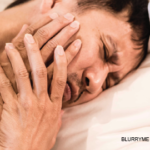Osteonecrosis of the jaw (ONJ) is a condition in which an area of jawbone is not covered by the gums that has lasted for more than eight weeks. ONJ occurs when a facial bone begins to starve from a permanent or temporary lack of blood. As the name indicates—with osteo meaning bone and necrosis meaning death—the bone begins to die, causing pain and deterioration.
Risk factors for ONJ include older age, steroid use, diabetes, gum disease, and smoking. ONJ is also associated with radiation, infection, steroid use, and/or bisphosphonate therapy for cancer and/or osteoporosis. Although some risk factors have been identified, sometimes this condition can also occur spontaneously.
ONJ resulting from bisphosphonate use may develop in patients after 18 to 22 months of therapy, but most cases it occurs after therapy that has been prolonged for more than five years. Why patients on bisphosphonates get ONJ is unknown; however, some feel it may be due to a decrease in blood vessel formation, a decrease in bone formation at the site, or toxic effects on the bone.
Some studies of osteoporosis patients on bisphosphonate therapy show that one in 100,000 to one in 263,158 get ONJ. According to patient–fact sheet writer Stuart Silverman MD, “because doses of IV bisphosphonates used to treat cancer can be ten times higher or more than the doses used for osteoporosis, cancer patients are more at risk for ONJ.”
Many ONJ diagnoses stem from patients complaining of pain, which is often related to infection, soft tissue swelling, drainage, and exposed bone, and, according to Dr. Silverman, “Typically, the doctor or dentist makes the diagnosis when there is the presence of exposed bone lasting more than eight weeks.”
Most patients with ONJ should be treated conservatively with rinses, antibiotics, and pain medicines, and patients with periodontal disease should consider nonsurgical therapy before agreeing to surgical treatment.
A health program of oral hygiene and regular dental care is the optimal approach for lowering ONJ risk. Patients beginning bisphosphonate therapy and not receiving routine dental care should get a comprehensive oral exam as soon as possible. Any problems developing in the mouth should signal the need for dental review.
Download the complete fact sheet on osteonecrosis of the jaw as well as other patient-education materials at www.rheumatology.org by following the links to patient education from the Practice Support Menu.


